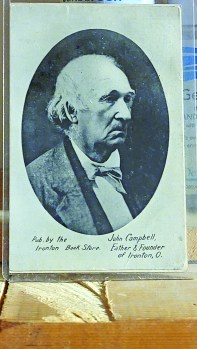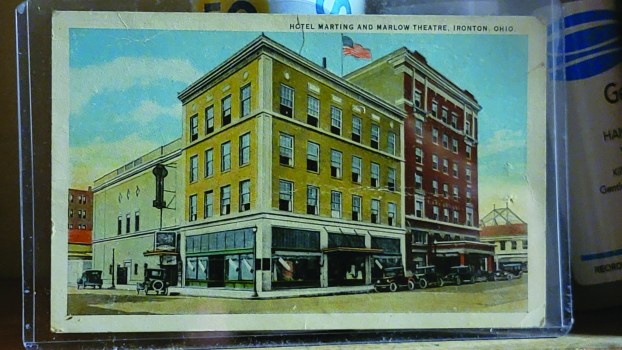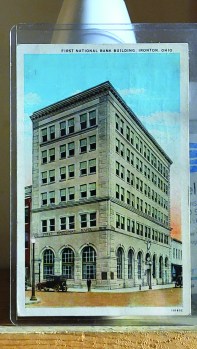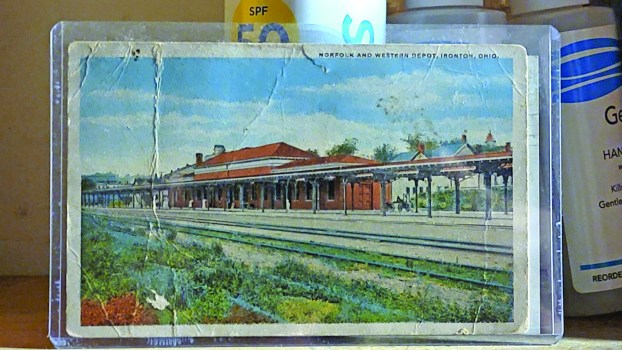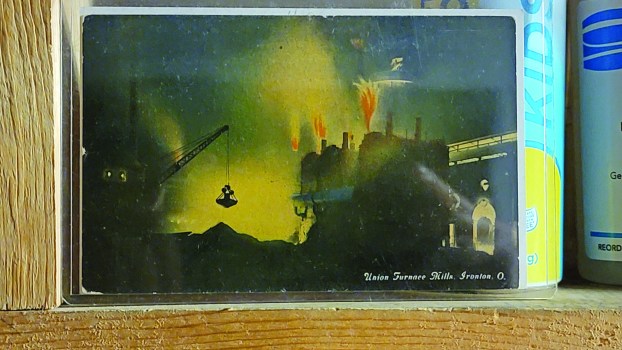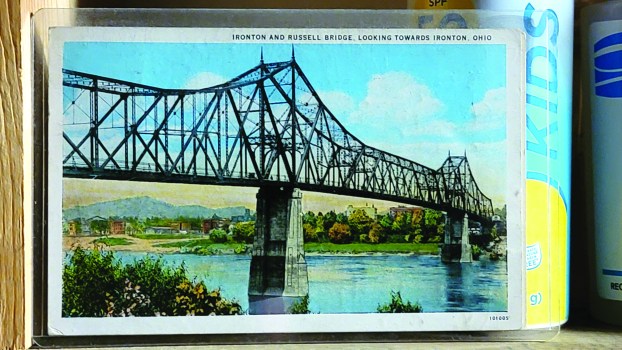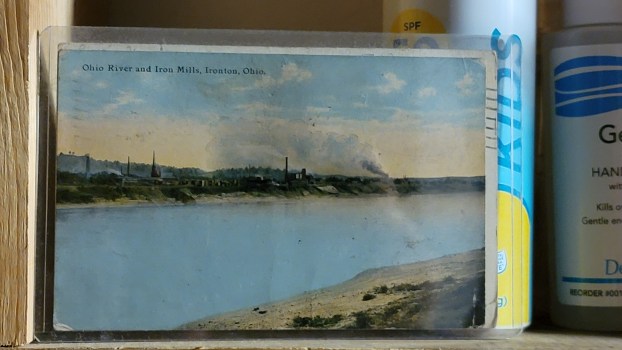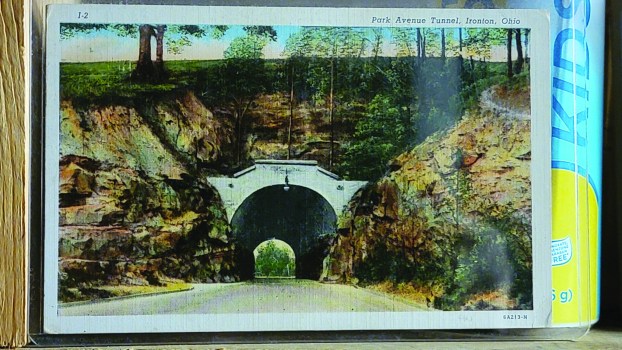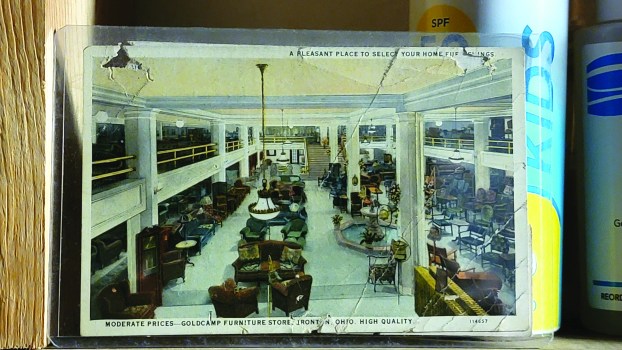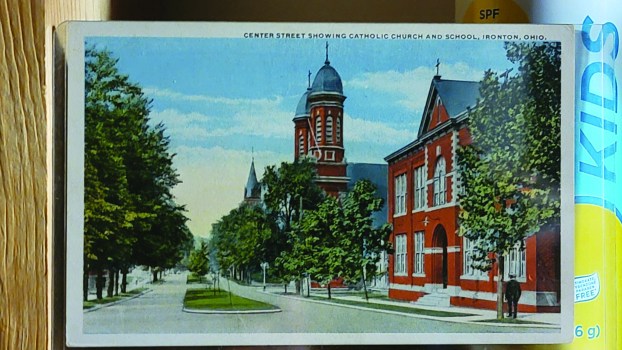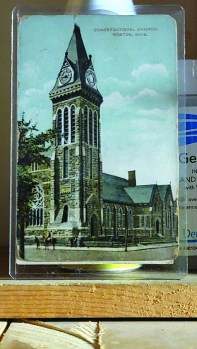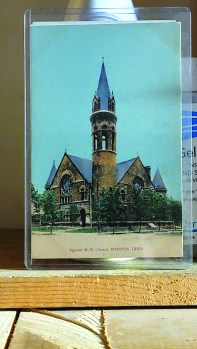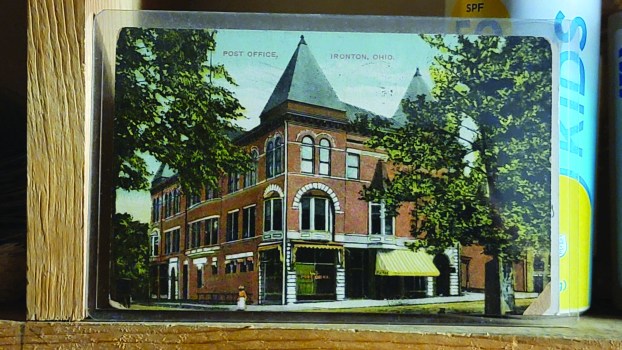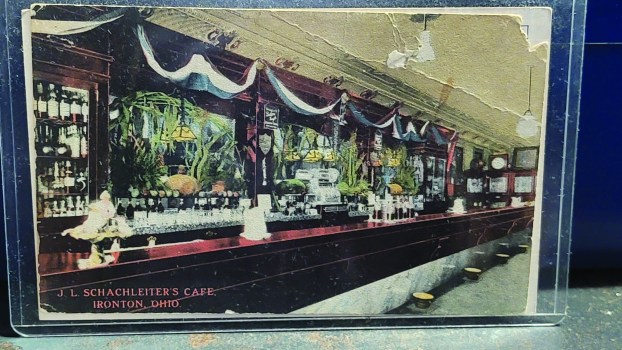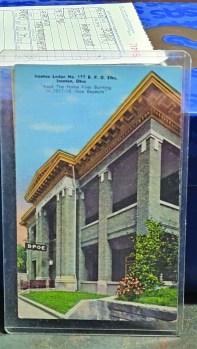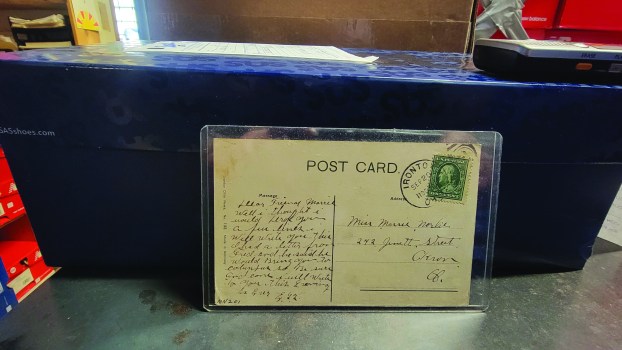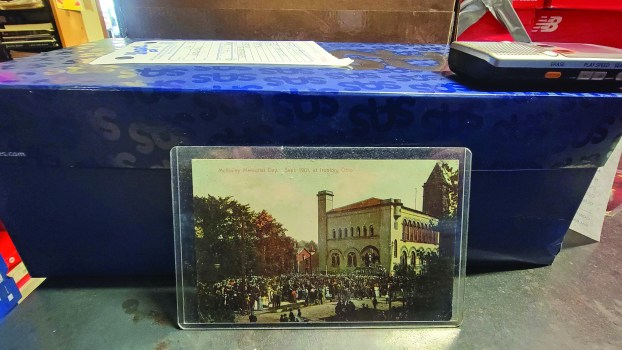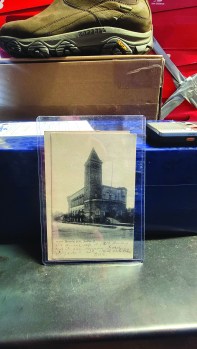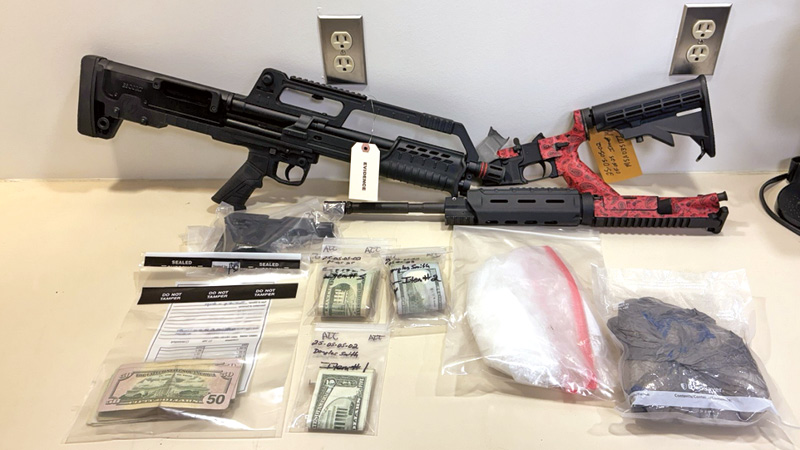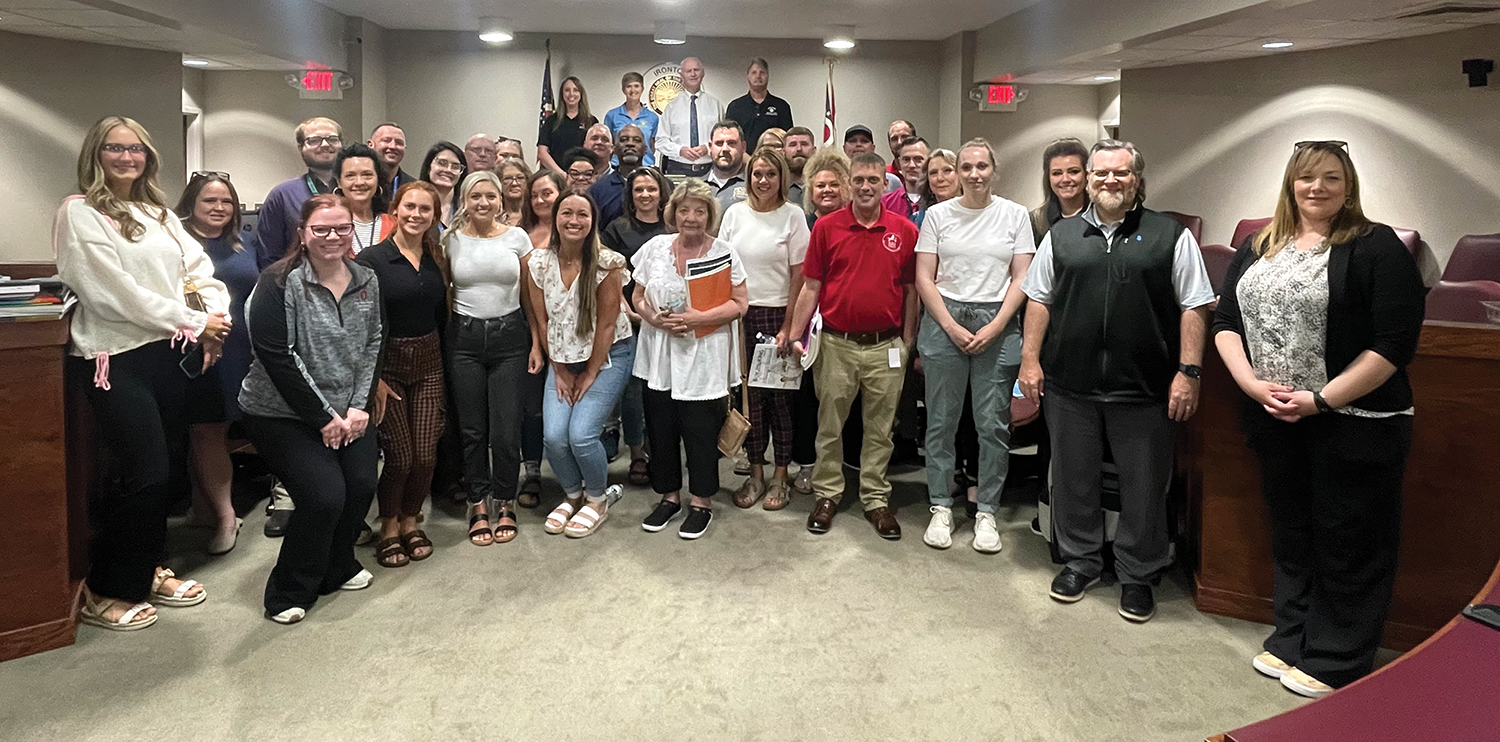Profile 2025: Collecting memories (WITH GALLERY)
Published 12:00 am Sunday, May 18, 2025
Joe Unger’s collection of vintage postcards showcases Ironton
Amongst the shelves of shoes in the backroom of Unger’s Shoes, Joe Unger sets down a wooden box. In the box are some of his collection of postcards carefully encased in plastic sleeves. These specifically showcase his beloved hometown of Ironton.
There are so many scenes of Ironton. Three are of the town’s founder, John Campbell. Several are long-gone scenes of men working the Ohio River. Others are businesses that are long gone, but the buildings that housed them are still here and have found new uses, like Goldcamp building across the Third Street from Unger’s Shoes. It was once a furniture store, then a JC Penney. Now it is the seat of the Ironton government. The postcard boasts that it had “over an acre of beautiful furniture” under its roof.
Another is Memorial Hall as it appeared on the day that thousands gathered outside it when it was the city hall of Ironton in 1901. They were there to mourn the passing of President William McKinley, an Ohioan who was assassinated by a nihilist.
So where did Unger’s love of postcards come from?
“My Dad, Gene Unger,” Unger explained. It was the elder Unger who started the shoe store after World War II.
“People would tell him that they were going on vacation and he would say “Well, send me a postcard,” Unger said.
And they did, from all over the country.
“Dad used to joke his shoes have been everywhere,” Unger said.
Those postcards would go up on a cork board in the back of Unger’s Shoes, where a young Joe Unger would stand and just drink in the colorful postcards.
Not all of the cards were from distant parts of America, some were cards of Ironton mailed from Ironton to Unger’s Shoes.
“They were joking with Dad,” Unger said. “That’s what got me started.”
When asked to pick his favorite Ironton postcard, Unger flips through the cards until he finds it.
“This is a good one,” he said. “It was one of the ones stapled to dad’s board. It’s J.L. Schachleiter’s Café.”
The card shows a classic old time bar with shelves and long serving area made out of dark wood. It is decorated with banners and ferns. And every few feet are a brass spittoon for patrons to spit their tobacco into.
“When I was growing up in the 1960s, there were a lot of people that remembered Schachleiter’s Café,” Unger said. Then he points to shiny objects spaced out every couple of feet in front of the bar. “Those are spittoons,” Unger said. Spittoons were large brass containers for patrons to spit their tobacco into.
And the second reason it is his favorite is a common refrain from collectors.
“Nobody else has it,” Unger said. “I know a circle of Ironton postcard collectors and every one of them would give me their front teeth if they could have that Schachleiter’s Café postcard.
And the third reason is that there are people alive today that remember it.
“They are very old now, but they would tell you great stories of Schachleiter’s Café,” Unger said. “So that’s my favorite one: Came from Dad, it’s from Ironton, it is post marked Ironton and people remember it. And its highly collectable and it’s very rare.”
As for why Unger collects the postcards, Unger said he has always loved Ironton as well as being passionate about saving its history.
“Post cards are a great historic record of this city and what is really tragic though, is I see some of these buildings in these postcards in their glory, in their heyday. And I see the same building today and it just not the same.”
He pulls out a postcard of the Marlow Theater, which still stands on the corner of South Third Street and Park Avenue.
“That’s where my mother and father had their first date,” Unger said. “Now that building, it has windows that are missing or boarded up. It has really fallen into such disrepair and nothing is being done about it. And it is right in the middle of our downtown. It’s is a real eyesore when you come into our city, rather than, as you can see in this postcard, how beautiful it was.”
He also points out a card that has the Selby Shoe factory, that was once a glory of Art Deco design. He thinks the city needs to more strongly enforce codes and make the building owners bring “them up to snuff or sell them.”
Over the years, people have brought Unger cards because they knew he collected them.
That’s how he got the card of Memorial Hall and many others.
As for how many postcards Unger has, he has to think for a moment.
“I think I have over 300,” he said.
His favorite era for postcards are from 1910-1940.
“They were used as a form of communication, whereas now we send a postcard as a novelty,” Unger said.
Post cards lost their popularity in the 1960s. It used to be that every town pharmacy had a spinner rack of cards showcasing the town. Even hotels sold cards. Now they are most found at tourist destinations.
“People just don’t send postcards anymore like they used to,” Unger said. σ


